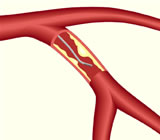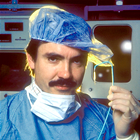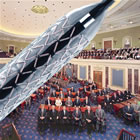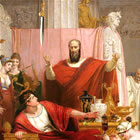 I’ve written a lot about Fractional Flow Reserve, or FFR, in the past — and the fact that it’s a simple tool that can be used during an angiogram to assess the actual obstruction to the volume of blood flow being caused by an arterial blockage. Sure you can SEE a blockage on the fluoroscopic image, but should you stent it?
I’ve written a lot about Fractional Flow Reserve, or FFR, in the past — and the fact that it’s a simple tool that can be used during an angiogram to assess the actual obstruction to the volume of blood flow being caused by an arterial blockage. Sure you can SEE a blockage on the fluoroscopic image, but should you stent it?
The results of the by now well-known FAME study indicate that a third of the blockages between 50% and 90% (as seen on the angiogram) actually had an FFR measurement of greater than 80% (meaning that the obstruction of flow was less than 20%, even though the blockage looked more significant on the angiogram). Most importantly, treating those blockages with angioplasty and stenting resulted in worse outcomes at one year — results which have remained constant now three years later. For more information, read our exclusive interview with Dr. Nico Pijls, co-principal investigator for FAME. Continue reading

 34 years ago, Andreas Gruentzig performed the first coronary angioplasty. Rather than cutting open the chest, sawing through the sternum and sewing a bypass conduit (harvested from the leg or internal mammary artery) into the coronary artery, he elegantly threaded a balloon catheter to the blockage through a small incision in the femoral (groin) artery, in an awake patient. He then inflated the balloon, compressing the plaque against the arterial wall and opening the artery. The procedure was a total success and his first patient, Adolph Bachmann, is alive and well today! (
34 years ago, Andreas Gruentzig performed the first coronary angioplasty. Rather than cutting open the chest, sawing through the sternum and sewing a bypass conduit (harvested from the leg or internal mammary artery) into the coronary artery, he elegantly threaded a balloon catheter to the blockage through a small incision in the femoral (groin) artery, in an awake patient. He then inflated the balloon, compressing the plaque against the arterial wall and opening the artery. The procedure was a total success and his first patient, Adolph Bachmann, is alive and well today! ( A lost story this past couple of weeks has been an “admission” by the American Heart Association that the number of angioplasties performed in the United States is actually half of what the AHA has been saying all these years.
A lost story this past couple of weeks has been an “admission” by the American Heart Association that the number of angioplasties performed in the United States is actually half of what the AHA has been saying all these years. Monday’s
Monday’s  FAME
FAME I wrote about this issue over a month ago (see “
I wrote about this issue over a month ago (see “ A
A 

